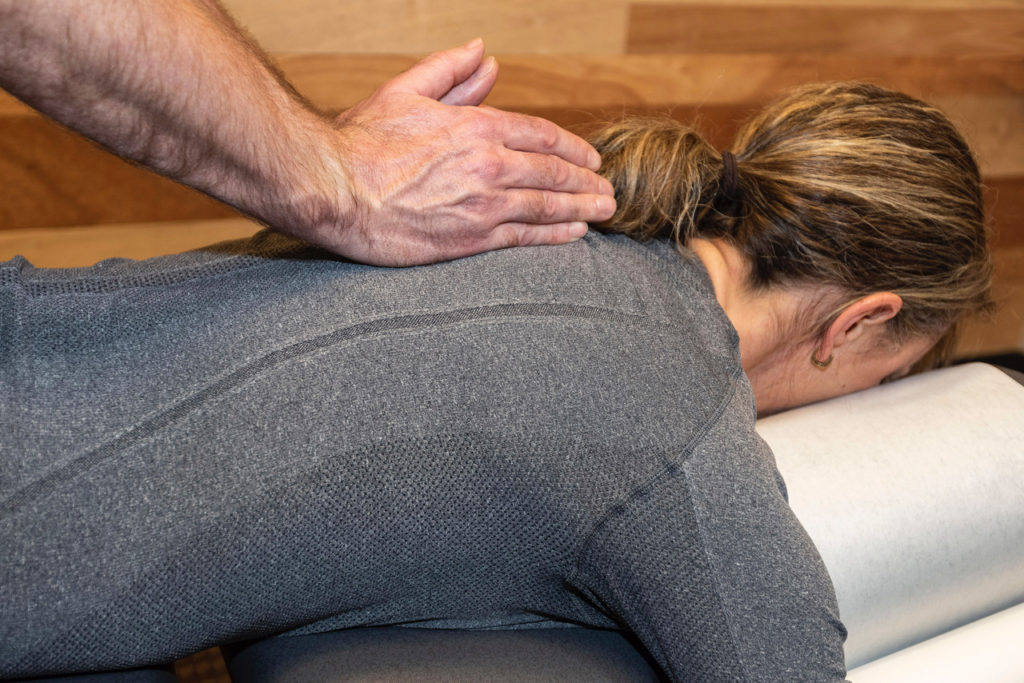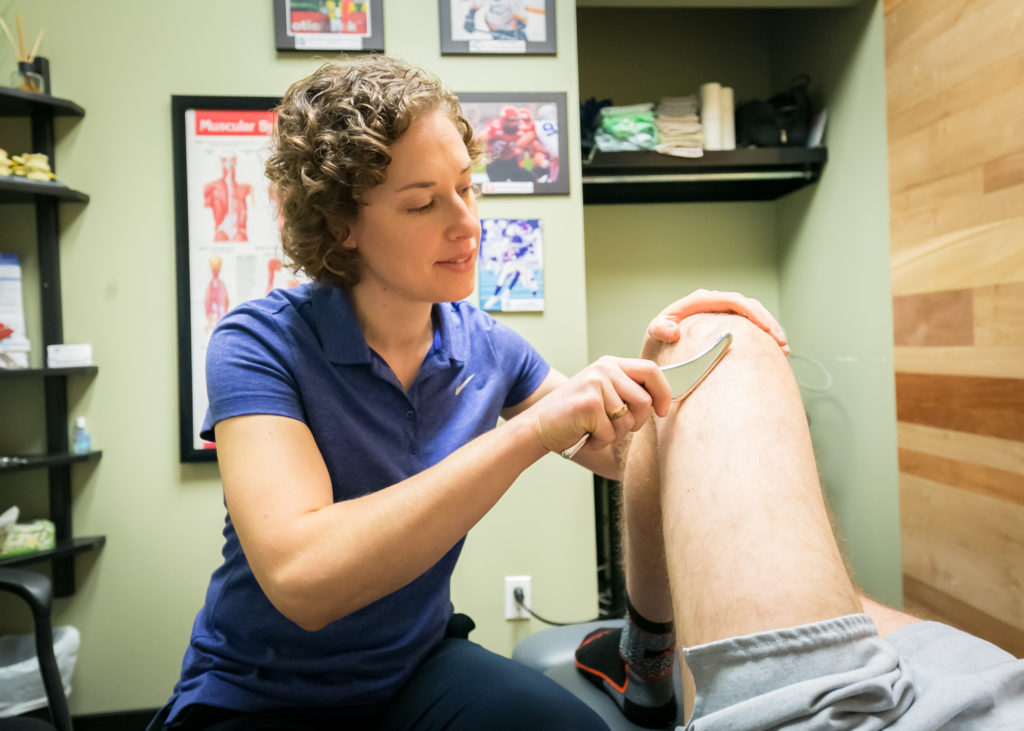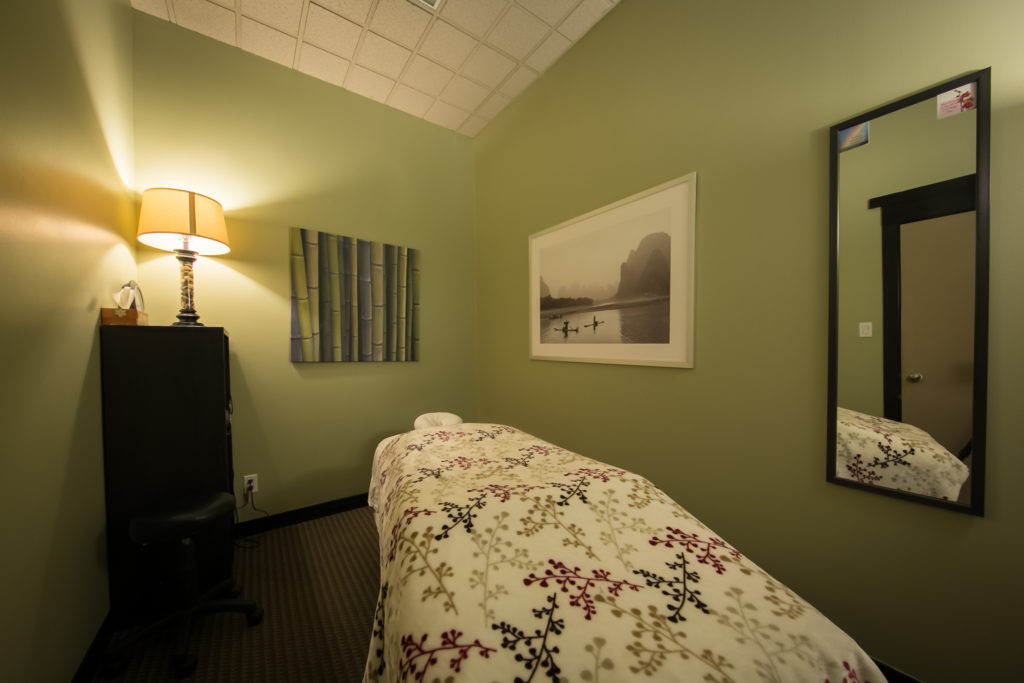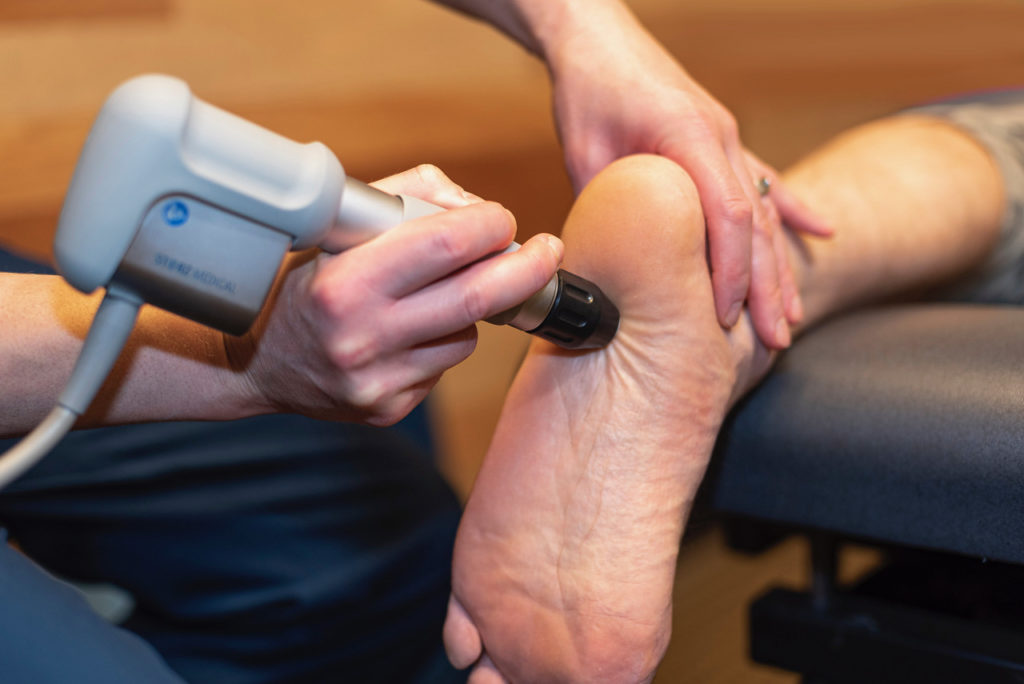Chiropractic Care
Chiropractic is the largest, drugless healing profession in the world.
Chiropractic is a health care profession that diagnoses treats and helps prevent disorders and conditions related to the spine, pelvis and extremities.
Doctors of Chiropractic are primary care professionals that use a drug-free, manual approach to health care. Doctors of Chiropractic believe that dynamics exist between lifestyle, environment and health. Central to treatment is the chiropractic adjustment. An adjustment is a specific, directed pressure to correct joint dysfunction. In addition to clinical treatment, your chiropractor can be a good source of information related to nutrition, lifestyle and exercise.
Chiropractic is a regulated health profession recognized by statutes in all Canadian provinces and American states. Canadian chiropractors undergo an intensive four-year, full-time course of study following three years of university before qualifying to undertake national examinations and become licensed to practice.

What Types of Conditions Does Chiropractic Treat?
- neck and back pain
- sports injuries
- nerve pinching or irritation
- headaches & migraines
- pain from osteoarthritis
- sciatica
- whiplash
- rib pain
- tingling/numbness in the arms or legs
- back pain from pregnancy
- maintenance of a healthy spine
Physiotherapy is a healthcare profession that focuses on the assessment, diagnosis, treatment, and prevention of physical impairments, disabilities, and pain.
Physiotherapists use a combination of manual therapy techniques, exercise prescription, and electrotherapy modalities to help individuals achieve optimal physical function, improve mobility, and reduce pain.
Common conditions Physiotherapists treat:
- Back and neck pain
- Sprains and strains
- Shoulder pain (e.g. rotator cuff injuries, frozen shoulder)
- Knee pain (e.g. osteoarthritis, ligament injuries)
- Hip pain (e.g. osteoarthritis, hip bursitis)
- Ankle and foot pain (e.g. plantar fasciitis, sprains)
- Tennis elbow and golfer’s elbow
- Tendinitis (e.g. Achilles tendinitis)
- Arthritis
- Sciatica
- Sport Injuries
What is Active Release Techniques (ART)?
ART is a hands on, state of the art soft tissue system/movement-based technique that treats problems with muscles, tendons, ligaments, fascia and nerves. Headaches, back pain, carpal tunnel syndrome, shin splints, shoulder pain, sciatica, plantar fasciitis, knee problems, and tennis elbow are just a few of the many conditions that can be resolved quickly and permanently with ART. These conditions all have one important thing in common: they are often a result of overused muscles.
How do overuse conditions occur?
Over-used muscles (and other soft tissues) change in three important ways:
- acute conditions (pulls, tears, collisions, etc),
- accumulation of small tears (micro-trauma)
- not getting enough oxygen (hypoxia)
Each of these factors can cause your body to produce tough, dense scar tissue in the affected area. This scar tissue binds up and ties down tissues that need to move freely. As scar tissue builds up, muscles become shorter and weaker, tension on tendons cause tendonitis, and nerves can become trapped. This can cause reduced range of motion, loss of strength, and pain. If a nerve is trapped you may also feel tingling, numbness, and weakness. ART removes the scar tissue so the muscles, tendons and ligaments can return to their proper function and flexibility.
What is an ART treatment like?
Every ART session is actually a combination of examination and treatment. The ART provider uses his or her hands to evaluate the texture, tightness and movement of muscles, fascia, tendons, ligaments and nerves. Abnormal tissues are treated by combining precisely directed tension with very specific patient movements.


Graston Technique
 What is Graston Technique?
What is Graston Technique?
Graston technique is an instrument-assisted technique used to break down scar tissue in muscles, tendons and ligaments. The technique utilizes 6 stainless steel instruments uniquely shaped to treat different areas of the body.
At our clinic, depending on the area of the body and/or problem you may get both ART and Graston in the same treatment. Stretching and icing the treated area after treatment is essential.
ART and/or Graston help with the following:
- Carpal Tunnel Syndrome
- Headaches
- Tennis & Golfer’s Elbow
- Plantar Fasciitis
- Shoulder pain (rotator cuff syndrome & frozen shoulder)
- Shin Splints
- Hip pain
- Knee pain – Runner’s Knee (IT band problems)
- Muscle pulls
- Ankle sprains

Massage Therapy
Massage Therapy is the assessment and manual treatment of the soft tissues of the body, including muscles, tendons, and ligaments. Massage improves muscle tone, stimulates circulation, and promotes relaxation. The circulatory, respiratory, digestive, and nervous systems all benefit from massage therapy. Your massage therapist may suggest stretches or strength-building exercises specific to your condition, and also recommend when follow-up treatments should be booked.

Shockwave Therapy
Shockwave therapy is an effective, non-invasive treatment for those suffering from many chronic tendon and joint disorders. Radial Shockwave therapy sends acoustic energy waves into the affected area causing a controlled micro-trauma. The effect of this micro-trauma is that it re-injures the tissue on a cellular level which results in the breakdown of scar tissue in the affected muscles, tendons, ligaments, or bone. The controlled re-injury of the tissue allows the body to regenerate blood vessels and cells, leading to faster healing and often a return to pre-injury activity levels.
How does Shockwave Therapy reduce pain?
Shockwave therapy is an effective modality in the management, reduction, and elimination of pain. Shockwave is effective because the acoustic energy waves stimulate an increase in metabolic activity in the affected tissue; encourage the break down of calcium deposits and also induces an analgesic reaction which results in blocked pain messages.
What conditions can benefit from the therapy?
Anyone with soft tissue injuries can benefit from shockwave therapy, especially athletes. Shockwave therapy provides a safe, non-surgical alternative for those suffering from chronic injuries including:
-
calcific tendonitis
-
plantar fasciitis
-
tennis elbow
-
bursitis of hip and shoulder
-
patellar tendonitis
Who should not use Shockwave Therapy?
Relative and absolute contraindications for the use of shockwave therapy include:
- Blood-thinning medications such as Coumadin or Heparin
- Heart or circulatory problems
- Cancer in or around the treatment area
- Pregnancy
- Diabetes
- Nerve or blood supply being too close to the site of treatment
- Cortisone injection in the area to be treated less than one month prior to shockwave therapy


TCM and Acupuncture
What is Acupuncture?
Acupuncture is an ancient, safe and effective alternative medicine. Acupuncture stimulates the release of endorphins through the insertion of needles into specific acupuncture points in order to encourage natural healing. Acupuncture stimulates the balance and flow of Qi which is considered essential to health in Traditional Chinese Medicine. When the body is healthy, Qi (pronounced chee) flows smoothly through the meridians which make up a conceptual network of pathways throughout the entire body.
When the balance or flow of Qi is deficient or obstructed, the body can become susceptible to disease or illness.
What does it treat?
Acupuncture treats both the symptoms and the root causes of the patient’s illness. Acupuncture has been shown to benefit many diseases such as, chronic pain, infertility, menstrual issues, anxiety and depression, and gastrointestinal diseases.
What to expect?
People often ask if acupuncture hurts. Most people report the needle sensation as a dull, heavy, deep pressure. These sensations are normal and indicate ‘de qi’, which means the arrival of energy. Most people find acupuncture very relaxing. Prior to inserting the needles, your acupuncturist will often ask you a detailed medical history, look at your tongue and feel your pulse.

